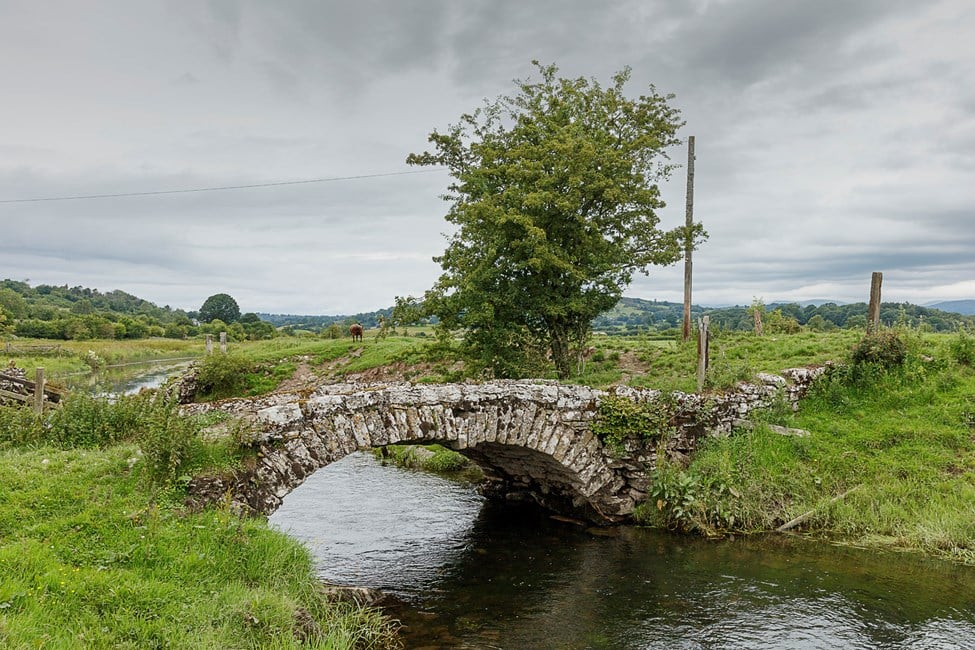The English countryside holds some of the world’s most cherished landscapes and heritage assets, yet the pressures on it are greater than ever. That is why the Countryside Stewardship Heritage Service, a partnership between Defra and Historic England, has become one of the quiet success stories of recent years. Designed to bridge the gap between farming, conservation and heritage, the service provides specialist advice and funding to help landowners and communities protect the buildings, archaeological sites and historic landscapes that give rural England its identity.
Since its inception, the service has evolved from a relatively niche advisory programme into a nationwide effort supporting millions of pounds worth of conservation projects. In 2024 and 2025 alone, more than £6 million was invested to sustain everything from medieval moated manors and Roman forts to dry stone walls, limekilns and nineteenth century bridges. The model is simple but effective. Landowners and farmers can apply for Countryside Stewardship agreements and if their land contains historic features or buildings at risk, Historic England provides the technical support to make sure conservation is done properly. The result is a growing portfolio of projects that not only stabilise the physical fabric of heritage assets but also create sustainable management plans to ensure they remain part of the landscape for future generations.
The Arch Gate at Badby in Northamptonshire is a perfect example of the service’s impact. This late eighteenth or early nineteenth century lodge gateway had deteriorated so badly that it had to be fenced off for public safety. With funding and specialist input, a feasibility study has been commissioned to prop the structure and plan future repairs so that this landmark can be enjoyed safely again. It is the kind of intervention that prevents small scale but vital rural features from quietly disappearing.
Another flagship scheme is under way at Scadbury Moated Manor in Scadbury Park, Greater London. Once home to the Walsingham family in the Tudor period, the moated site’s historic fabric was being eroded by water and time. Thanks to the Heritage Service, a feasibility study will guide the stabilisation and conservation of the moat walls, ensuring one of London’s hidden medieval gems survives for generations to come.
In the Lake District’s Lyth Valley, landowners are working with the scheme to save a crumbling limekiln and its associated nineteenth century access bridge at Inman’s Bridge. By supporting feasibility studies and eventual restoration work, the Heritage Service is protecting a slice of the area’s industrial and agricultural history, demonstrating that heritage conservation is not only about stately homes but also about the working structures that shaped rural life.
On Dorset’s chalk hills, the Lyscombe Priest’s House and Farm Chapel and their surrounding landscape showcase how the Heritage Service can act across a wider area. Here, a cluster of scheduled monuments, ruined buildings and fragile flint and brick walling are receiving attention. Conservation plans will stabilise what remains and guide sympathetic land management, blending archaeology, building repair and landscape conservation.
Further west, on the island of Lundy off the Devon coast, the Fog Battery stands as a nationally significant piece of maritime heritage, built to warn ships of the treacherous coastline. Constant exposure to sea spray and gales threatened its survival. A grant from the Heritage Service is now stabilising the structure to protect it against erosion and weather damage.
Some of the sites receiving support are more horticultural than architectural. Warley Place in Essex, the former garden of renowned plantswoman Ellen Willmott, still contains rare historic planting areas and structures such as the Alpine Gorge and Fern Grotto. With help from the Heritage Service, feasibility studies are being prepared to conserve these unique features and revive one of Britain’s great lost gardens.
The Roman past is also represented. At Epiacum, or Whitley Castle, in Northumberland, one of the highest Roman forts in Britain is receiving support to assess its archaeology and environment. This will help tackle issues such as erosion and livestock damage and protect the remains of walls, ramparts and settlements that have stood for nearly two millennia. Nearby at Chillingham Park, also in Northumberland, a study will refresh knowledge of the site’s archaeology and heritage while ensuring sustainable access and the management of environmental risks, safeguarding a Grade II registered park that is home to the legendary Chillingham wild cattle.
What all these projects have in common is a blending of public money, private stewardship and expert guidance. By stepping in early with feasibility studies, the Heritage Service helps landowners understand what needs to be done before damage becomes irreversible. It also ties conservation work into broader environmental stewardship plans, meaning that heritage, biodiversity and farming can work together rather than in conflict.
For rural communities, the benefits go beyond preservation. Many of these projects open up new opportunities for education, tourism and local employment. They also send a powerful signal that heritage is not just about big cities and famous landmarks, but about the character and identity of every parish and hamlet. By targeting support where it is most needed, the Heritage Service helps ensure that England’s rural heritage remains a living part of people’s lives rather than a backdrop slowly fading away.
At a time when the rural environment faces multiple pressures from climate change to development, changing farm economics and skills shortages, the Countryside Stewardship Heritage Service represents a model of how partnership working can deliver for both heritage and people. It is an approach built on evidence and trust. Farmers and landowners know their land best, but Historic England and Defra can bring the expertise and resources to conserve what is special about it.




